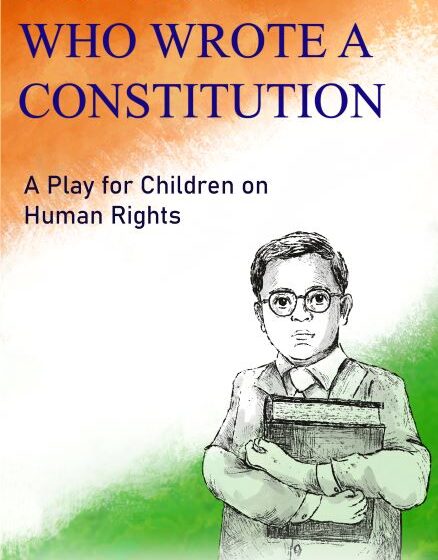Why is there a need for a children’s play on the life of Bhim Rao Ambedkar!

Team L&M
Author Rajesh Talwar who recently came out with a play, The Boy Who Wrote a Constitution, on Bhim Rao Ambedkar for children, tells Life & More why he felt compelled to write it. “The Boy Who Wrote a Constitution is a fact-based drama based largely on Ambedkar’s own recollection of his childhood. Much of the material used in the play is based on Babasaheb’s own revelations about seminal events in his life. I have drawn heavily on Ambedkar’s memorable essay Waiting for a Visa,” says Talwar, adding, “To my knowledge this is the first children’s play that has been published on Ambedkar’s life, and it was long overdue.” The author tells us more about the making of the book:

What prompted you to write a play for children on Ambedkar?
Why did I choose to write a children’s play on Ambedkar? It is because of young Bhim’s struggles as a child, and the courage he displayed to overcome great obstacles which make him a truly inspirational figure for children across the world. My play has five children, including a Muslim, a Hindu and a Christian child who have been asked by their teacher in school to write and stage a play on an important Indian. In the very first scene of the play, one of the kids, Milan, suggests that they write and enact a play on BR Ambedkar instead of any of the other national leaders, for Babasaheb’s childhood was especially full of trials, tribulations and struggles.
But there were many who faced discrimination…
NO. No other great national leader, including Nehru, Bose or Gandhi faced such discrimination at school. Young Bhim could not even drink water in school unless there was a peon to turn on the tap. In his autobiography, he writes about how that particular situation could be summed up: No peon, no water! A high performing student, he was nonetheless made to sit at the end of the classroom on a piece of sack.
Neither Nehru, Bose nor Gandhi faced any problems with paying for tuition fees at school or when studying overseas. This wasn’t the case with Ambedkar. Had it not been for the financial support provided by the Maharaja of Baroda, there was no way he would have been able to study at Columbia University or at the London School of Economics.
Any other place where he was discriminated because of his caste?
YES. School was not the only place where young Bhim faced discrimination. I have included a scene in the play depicting a life-changing train journey in Ambedkar’s childhood. The world is aware of Mahatma Gandhi’s train journey in South Africa where he was thrown out of a compartment despite possessing a first-class ticket. A handful of people are aware of a similar, hugely significant train journey Ambedkar undertook with his siblings as a child. Bhim and his siblings reach Masur Railway Station by train to find out no one will serve them water because they are Dalits. Young Bhim finds out that no cart driver will allow them to sit on their cart and take them to Koregaon where their father is posted. Do you know how they travel eventually? The cart driver runs in front of the bullock for fear of being defiled, and the children drive his cart. Can you imagine?
Surely things must have changed after he studied abroad…|
NO. Babasaheb’s trials and tribulations did not end even after his attending Columbia University and the LSE. He came back to India to work for the Maharaja as per their agreement. Till such time that he got official accommodation he needed to stay somewhere, but he couldn’t get an accommodation anywhere in Baroda because of his Dalit stature. He requested a Hindu friend and then a Christian for a temporary accommodation but even they turn him down!
Any incident/s that you feel stands out in Ambedkar’s life?
There are three incidents that focus on the difficulties experienced by Dalits in accessing water from sources available to everyone else. In school, young Bhim experiences difficulty in getting water to drink, freely available to all non-Dalit students. At the Daulatabad Fort, he and his friends are set upon by a group of Muslims who object to their drinking water from a public tank. Finally, a scene dramatizes the Mahad Satyagraha in which Ambedkar leads thousands of Dalits to the Chowdar Lake for them to drink water just like anyone else.
How did you adapt the book so that it could be an easy read for children? And, how can it benefit kids?
It is written in a simple, easily relatable fashion, and can be transformative for children as well as their teachers and parents. Moral science lessons can often be boring but in contrast the enactment of a play can be a rewarding and exciting endeavor. The play offers great scope for positively impacting the minds of children in a way that will ultimately prove beneficial to them as well as society. For instance, if a Hindu child were to play the role of a Muslim child, a Muslim child the role of a Christian and so on, they will all learn through the process of enacting the play that they all have to wage a battle against the common enemy of casteism and discrimination.


